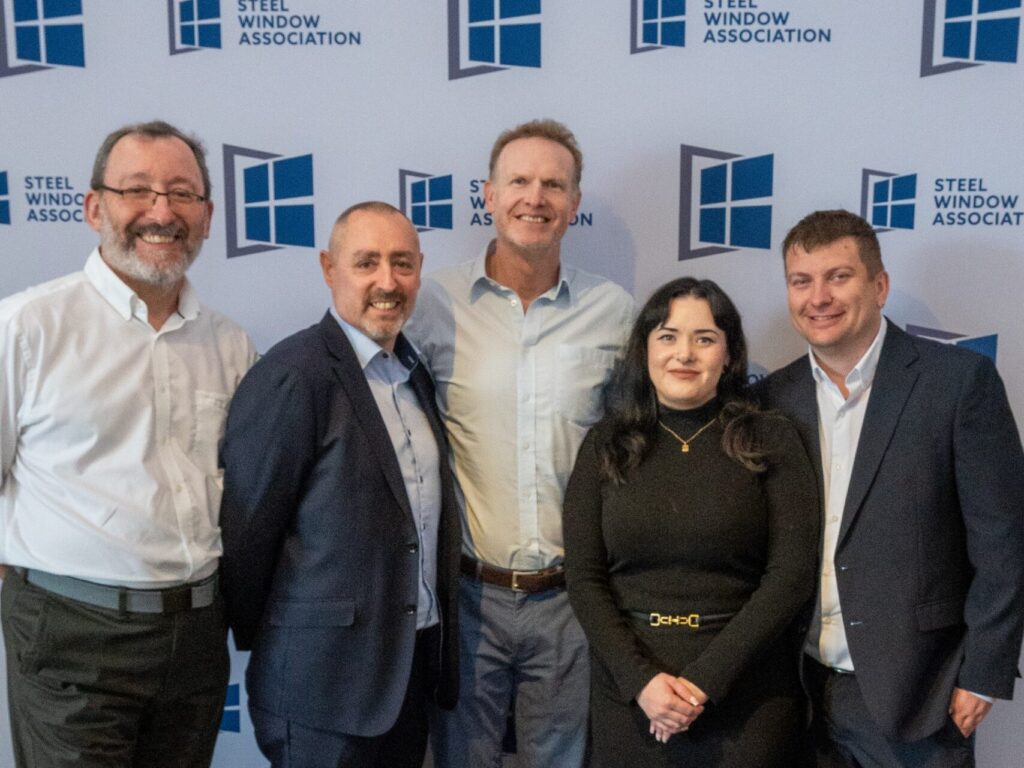After departing Brightstar to spawn Sirius Property Finance, the level of experience and knowledge propelled the new company upwards. Robert Collins, Sirius director, speaks to Showhome about the company.
How did the move out of Brightstar Financial Limited come about?
The idea of having a London operation was on the radar at Brightstar going back quite a few years. We knew that to get into the high net worth and corporate sectors we would need a London base to be able to do that properly.
Initially, the idea was that Brightstar would open a London office, but as we started to think a bit more deeply about it we realised that what Brightstar does as a predominantly broker to broker led institution and that wasn’t really what we were going to be doing in London.
We decided that we would badge the London office separately and hence the Sirius brand was born. We still have the benefits of having the Brightstar company behind us and currently we are a trading style of Brightstar anyway, so that has made things easier for us as we can use the same introducer agreements with lenders, come under the same FCA number etc.
At Sirius we are trying to be more relationship focused, whether that be with direct clients or introducers. We still take business from other intermediaries, but we deal much more with direct clients here compared to Brightstar and that is really how the idea of the different brand came about.
It seems that the foundations of the company lie with experience and know-how . Just how much experience does the company have when it comes to property finance?
Yes, you’re right. We’ve deliberately used consultants in this office that are more experienced. We’re trying to go after the larger and more complicated transactions and that needs knowledge and experience. I have been in financial services for nearly 30 years and I’ve been involved in real estate finance for over 20.
Some of the other guys in the office are not quite as old as me, but all of the people here have had long standing experience within the property finance sector. That means either on the broker side, or, like myself, having been on the lender side and then swapping to the other side of the desk to become a broker.
There is no substitute for experience – you get to understand what pitfalls might jeopardise a deal or how to structure the transaction for the clients’ best advantage – and in this office we all come with slightly different backgrounds so the spread of experience is very strong.
On a day to day basis we overlap in some areas, but I probably have more commercial experience than some of the other guys in the office. Some of them come with more residential investment experience, others with more knowledge on the bridging side of the business. However, if we do have a transaction that is particularly complicated we work together and bounce things around the office to come up with solutions.
When we put our heads together to work on something we are looking to see whether someone has seen a transaction like this before and how was the solution put together or whether there’s a new lender that’s offering something a bit different that might fit that particular transaction.
I think the combination of the experience of the individual consultants and the team ethos we have here really gives us a strong foundation for getting the best outcomes for our customers.
The company stresses that they know a host of top-level contacts within the sector – how beneficial has this been in making things happen for the company?
That was one of the big benefits of having the Brightstar name behind us. As a multiple award-winning company they are well known in the industry. In addition, they have very strong links to a lot of senior people within lenders that operate in our parts of the market.
We weren’t really like a start-up, because we already had those readymade links. This means that if we have a problem we do have the ability to get on the phone to senior people. This doesn’t apply to every case, but if you’ve got a particular sticking point, but you can see there’s a solution, then getting on the phone to one of the senior decision makers at one of the banks, or one of the big fund institutions, makes a huge difference.
Sometimes it just takes a little bit more creativity and I’m sure that with our knowledge and contacts we get transactions through that may well fail elsewhere.
When it comes to development finance projects themselves, how important is it that they are judged on a case-by-case basis, as opposed to treating them all in one light?
Every transaction in the development sector is case-by-case because there’s so many factors that go into it; the location, the properties that are being developed; the background, experience and financial strength of the principals behind it.
You could well have a case where there are two identical schemes, but with different principals behind them. One would get funded and the other one wouldn’t, so it’s impossible to use a blanket approach on development as every case will be unique.
I had a big scheme in Birmingham with a particular lender in mind. Unfortunately, they had just agreed another big scheme in Birmingham and were worried about their geographic exposure, so were not able to consider my scheme.
You can’t generalise with cases. Obviously, you know who is out there and their basic parameters, but every time an enquiry comes in, we look at that as a unique transaction.
We will test the market, see who has got the appetite for the transaction and who is going to offer the best set of terms for the customer.
Each customer will quite often have a different ‘buzz point’ for themselves. Some are rate conscious, some are gearing conscious. A lot of the clients that come to us are looking more for gearing than necessarily the lowest pricing, but you need to understand; what is the client actually trying to achieve?
There is normally a bit of give and take between the clients and the lender as we structure the transactions. There will be areas that lenders won’t be so comfortable to move on, and there will be areas where clients focus more sharply.
It’s understanding how you structure that relationship so both parties are happy with the outcome. That’s the way you build a relationship. Obviously, once you’ve done one transaction for a client, then the subsequent ones normally become easier.
How important is the location of the property when it comes to finance?
It’s interesting the way the market has gone over the last few years. If you go back a little while a lot of the lenders were looking for property deals in London and anything outside the M25 seemed to be completely off their radar.
We have now seen almost a complete turn-around with a lot of lenders now being less comfortable to lend into some of the more expensive post codes in London. Instead they looking for more ‘bread and butter’ developments in commuter belt and provincial locations.
We take enquiries all around the country and there are some lenders that are truly nationwide. There are some that like the South East, some are based in Manchester, so, for us, location isn’t that important.
We just need to know for each geographic region, who can consider it, and who can’t. For example, I’ve been up to Birmingham a few times recently, I’ve been up to Leicester to meet clients and if need be we would fly to Scotland to meet a client. Location isn’t really an issue for us, it’s just knowing which lender can consider which area.
When it comes to short term finance, how quickly can you get an answer over to a customer?
With short term finance the lenders are all set up for speed and quite often it will be same day responses for enquiries or at least within 24 hours.
However, you do see a degree of layering within the short-term market as there are a lot of lenders who operate in that sector and each will try to identify their own niche.
Over the last few years a lot of additional funding has come into that part of the market and that competition has put downward pressure on pricing. Some lenders will compete on price, some of on property type, some on location etc. The lenders that compete on price tend to be a little bit more measured in their approach and come at it with a banking view on the credit.
Then there are other, private lenders who don’t compete on price, so they need to compete on criteria and speed. It all depends on the urgency of the case.
If people tell me that I’ve got to complete within 10 days, then it’s probably a case of looking at the smaller, private lenders, who can really move in a nimble and quick way.
However, if someone’s telling me they’ve got a month or more, this probably opens up the doors to some of the other lower cost bridging lenders that have more credit hurdles to overcome.
On the short-term side, as with development, it is really case-by-case as this allows us to understand what is the urgency, what is the outcome, and who is going to be the best fit for this particular client.
What are the key differences in offering finance by senior debt finance and stretched senior finance?
It’s a simple principle on the development finance side, that gearing and pricing move up together.
The traditional senior lenders have been the high street banks, but they have really had a weak appetite over recent years for development loans.
As an example, I used to do a lot of business with Barclays, but they shut their books to most new customers a few years on the grounds they felt they had enough development business with their existing clients.
What we class as the senior lenders now are really the merchant bank funders and they are typically looking up to 75%-80% of costs on a development scheme. Typically, their interest rates are in the 6 or 7%pa range with entry and exit fees that total 2-3%.
For clients that want to proceed with less cash equity in the deal the stretched senior lenders have come in to the market and they can look at 85 or 90% of the costs. Clearly there will be a trade-off on pricing and the principle is as simple as that. The more you borrow, the more you pay.
The approach goes back to our earlier conversation about how we deal with each individual client – we are talking to the borrowers about that trade-off between gearing and pricing and how they look at return on capital versus finance costs.
It’s normally part of the early negotiations to work out how much cash they can put in, how much cash do they want to put in and what is the best structure for the borrowing from there.
In our experience most developers either want to keep a bit of cash in reserve for unforeseen problems, or they want to keep a bit of cash in reserve in case they see another site or opportunity.
That’s why a lot of the clients who come to us are looking for us to structure something with a high level of gearing, whether that be stretch senior, or a combination of senior and mezzanine lending.













